Originally we used no-cache many years ago and did run into some problems with stale content with certain browsers… There are times when you may want to mix methods even on the same resource https://forex-review.net/okcoin-review/ based on context. For example, you may want to use reload on a service worker and background sync, but use default for the web page itself. This is where you can manipulate the user agent (browser) cache to your liking.
See answer here: How to control web page caching, across all browsers?
I have not been able to prove this, but I’m concerned that my data may be getting cached. It will only apply to the index files and not other files you still might want to be cached. This may also come in handy if your dynamic files e.g. php, etc. are being cached by the browser, and you can’t figure out why. As @Kornel stated, what you want is not to deactivate the cache, but to deactivate the history buffer. Different browsers have their own subtle ways to disable the history buffer. The no-store header, on the other hand, prevents the data from being stored outside of a session, in which case it simply isn’t available for a history mechanism to use.
This works because ADD will always fetch the file/URL and the above URL generates random data on each request, Docker then compares the result to see if it can use the cache. This goes in your root .htaccess file but if you have access to httpd.conf that is better. This code uses the FilesMatch directive and the Header directive to add Cache-Control Headers to certain files. Public – may be cached in public shared caches.Private – may only be cached in private cache.No-Cache – may not be cached.No-Store – may be cached but not archived.
- Other Cache-Control parameters such as max-age are irrelevant if the abovementioned Cache-Control parameters are specified.
- A client request with no-store shouldn’t write to disk or database and is meant to transient.
- On all other browsers I tested, they did fetch a fresh version from the server.
- After logging out from our website you could press the back button and view cached pages.
- This goes in your root .htaccess file but if you have access to httpd.conf that is better.
- First of all, this question and answer are targeted on “web pages” (HTML pages), not “file downloads” (PDF, zip, Excel, etc).
Until you do so, your browser will keep the old cached version, and won’t refresh it with a “normal refresh” (F5). They are really intended to force UA’s to refresh volatile information, not keep UA’s from being retaining information. At the very least, there is no guarantee that any routers, proxies, etc. will not ignore the caching directives as well. In the old HTTP spec, the wording was even stronger, explicitly telling browsers to disregard cache directives for back button history.
For modern web browsers (After IE
In particular, I noticed that none of them would stop IE8 from using a cached version of the page when you accessed it by hitting the back button. Other Cache-Control parameters such as max-age are irrelevant if the abovementioned Cache-Control parameters are specified. The Last-Modified header as included in most other answers here is only interesting if you actually want to cache the request, so you don’t need to specify it at all. The Cache-Control is per the HTTP 1.1 spec for clients and proxies (and implicitly required by some clients next to Expires). The Pragma is per the HTTP 1.0 spec for prehistoric clients. The Expires is per the HTTP 1.0 and 1.1 specs for clients and proxies.
Verifying the actual HTTP response headers
If the consumers of this information are members of the public, the only thing you can really do is help them understand that once the information hits their machine, that machine is their responsibility, not yours. The freshness model (Section 4.2) does not necessarily apply to history mechanisms. That is, a history mechanism can display a previous representation even if it has expired. On the other hand, if the server auto-includes a valid Date header, then you could theoretically omit Cache-Control too and rely on Expires only.
Hot Network Questions
To answer the question, there are two players here, the client (request) and the server (response). I just want to point out that if someone wants to prevent caching ONLY dynamic content, adding those additional headers should be made programmatically. In addition to the headers consider serving your page via https. On IE6-8, FF1.5-3.5, Chrome 2-3, Safari 4, and Opera 9-10, these headers caused the page to be requested from the server when you click on a link to the page, or put the URL directly in the address bar. That covers about 99% of all browsers in use as of Jan ’10. I found that all of the answers on this page still had problems.
They include directives to declare what should be cacheable, what may be stored by caches, modifications of the expiration mechanism, and revalidation and reload controls. Also no-store technically means must not store to any non-volatile storage (disk) and release it from volatile storage (memory) ASAP. A client request with no-store shouldn’t write to disk or database and is meant to transient. I understand the docker build –no-cache will disable caching for the entire Dockerfile. Any combination of client, or server can dictate what method, or set of methods, to use.
ADDITIONAL SERVICES
By contrast, no-store says to not even keep a copy, which means there’s nothing to ask about. If you know the answer to “Can I reuse this?” is always no, you get a performance boost by skipping cache validation and saving room in the cache for other data. I have a few RUN commands in my Dockerfile that I would like to run with -no-cache each time I build a Docker image.
FORUM NAIL SALON
By clicking “Post Your Answer”, you agree to our terms of service and acknowledge you have read our privacy policy. In the browser, I get a cached version of the stylesheet which does not reflect the recent one. Connect and share knowledge within a single location that is structured and easy to search.
- If the client request was no-store, it doesn’t matter what the server returns, it won’t cache.
- That covers about 99% of all browsers in use as of Jan ’10.
- That is, a history mechanism can display a previous representation even if it has expired.
- These way don’t use cache but for the docker builder and the base image referenced with the FROM instruction.
- My current understanding is that it is just for intermediate cache server.
No-store should not be necessary in normal situations, and in some cases can harm speed and usability. Sample code in Python using web.py web.header calls follows. I purposefully redacted my personal irrelevant utility code.
It looks dirty, but as far as I know it’s the most efficient way to continue benefiting from the cache system of Docker, which saves time when you have many layers… In most of cases, these 3 things are perfectly enough to allow a clean build of our image.So we should try to stick to that. This is of course not a direct answer to the question, but might save some lives… Alright, this is due to the pain that godaddy gives me by implementing their own caching in a MANAGED WORDPRESS hosting.
However beware of the time you leave the contents in the cache. There are different methods and if not specified, will use default. Intermediate cache servers compatible with HTTP 1.1 will obey the same no-cache and must-revalidate instructions as browser caches will. I only want the caching to be applied to specific actions, not for all actions.
I must clarify that no-cache does not mean do not cache. In fact, it means “revalidate with server” before using any cached response you may have, on every request. JQuery calls back to a controller action that returns results in JSON format.
After logging out from our website you could press the back button and view cached pages. So now anything related to the docker is gone and docker cache is completely deleted , like you have a fresh docker installation . Find centralized, trusted content and collaborate around the technologies you use most.
In HTTP 1.1, the Cache-Control takes precedence over Expires, so it’s after all for HTTP 1.0 proxies only. Our investigations have shown us that not all browsers respect the HTTP cache directives in a uniform manner. Using that super delete command may not be enough because it strongly depends on the state of containers (running or not). The list is just examples of different techniques, it’s not for directinsertion. If copied, the second would overwrite the first and thefourth would overwrite the third because of the http-equivdeclarations AND fail with the W3C validator.
I looked it up and as it turns out, their flush caching facility is not available to me in the wordpress dashboard as it is a subdirectory /wp/ installation.
No-cache tells it to store the response in the cache, and a later request without it might trigger internal cache. If a caching system correctly implements no-store, then you wouldn’t need no-cache. Additionally, some browsers implement no-cache like it was no-store. Thus, while not strictly required, it’s probably safest to include both.
Leave a Reply
